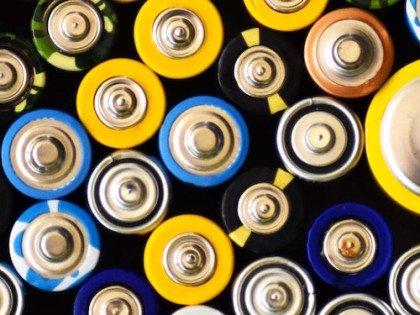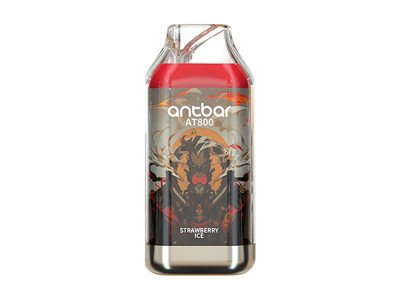Andrew told us that he, “started JAC and I did so because I was heavy smoker, so it was as much for my own benefit as making any money. Actually I’d have been happy doing it in my spare time if it meant I could stop my smoking. My intention was always to get to a stage where we could design and make products from scratch the way I wanted them.”
“The retail business was a by product of that really, and mimicked how I’d like to treated as a customer, it still does, but the company is now run by far better business men than myself and I concentrate on creating products with the design team.”
“When I started the business I was only really supplying friends and family, at that stage we were called J.L.A.C. which stood for Just Like A Cigarette, but everybody kept calling it JAC. By the time the company was actually a fully-fledged registered business it had moved to JAC, pronounced like the name Jack, it was just easier, and seemed to fit.”
A lot has changed over the intervening eight years since the company came into being: “When I look back at what we were doing in 2010 it makes me smile. We have grown and matured massively since then, and we are unrecognisable in what we do, and are today. I still see some of the same customers leaving reviews though.”
“From the start I wanted to create better products. Initially that meant taking the best from the Chinese manufacturers and marrying them up together into kits, or making small alterations to designs to improve things incrementally.”
“In those days a good manufacturer of carts, normally had an average battery and vice versa, so we basically took the best batteries, and the best carts, then combined them to create kits that improved performance overall. This meant we could offer lots of options, almost bespoke, as we brought all the parts into the UK and packed the kits according to demand and user preference. It was different to what everybody else was doing.”
Eventually, JAC grew to a size whereby it could afford to put together a team able to design and build things from scratch: “If it had just been about money, I’d have focused all our efforts on retail and selling other peoples stuff, but my passion has always been building things and I did not want to do another ‘me too’ business. At it’s heart JAC is a manufacturer and the retail is a welcome side affect, it allows us to do the things we want, and be different from your standard UK ecig business.”
The design process was dear to Andrew and a key factor in differentiating JAC from its competitors: “I wanted to sell what I believed to be the best products possible. I couldn’t do that unless I had complete control over the design. There were already plenty of retailers in the UK when I started, there were no mainstream manufacturers, and there pretty much still isn’t in the independent sector.”
It all began with The Series E, a product produced under licence, but it took a five-year period to form a team that could release The Tilt from scratch. Then things took off: “We did the S17, followed by the DNA 75, followed by the S22. We also did a lot of design work for other businesses alongside our own products. In this year alone though we should almost double the hardware in JAC; we’ve got the VIM, the wee VIM, then a DNA 250c mod, a 21700 DNA75c mod and a new mesh tank – the S25 Linc.”
It isn’t a case that one plan comes to fruition before the next one is embarked on either: “We are now running around 8 main projects and around 6 side projects or projects for other people. We also have around 4 completed projects, that haven’t gone into production, or won’t go into production until we see a clearer route. This tends to happen if the design gets too expensive, or just doesn’t workout. They are basically left to sit on a back burner until we see a use for them.”
There is a palpable sense of enjoyment when Andrew adds: “What drives us to make products is quality control. We could buy off the shelf products from other manufacturers, like most businesses do, but whenever we have done that we have had issues way beyond our own devices, to the point it’s a more comfortable position for us to make our own products and be sure of what we are selling.”
"There is a real satisfaction in being responsible for creating a physical thing that you see being used and enjoyed - I think all designers and engineers will agree with that”
“It also makes us unique and different from the majority of other businesses. It may be a harder approach, but I love products and I will always want to make them. There is a real satisfaction in being responsible for creating a physical thing that you see being used and enjoyed - I think all designers and engineers will agree with that.”
JAC were fortunate when the Tobacco Products Directive hit the UK: “We were already implementing nearly everything the TPD wanted, it wasn’t a massive deal for our business. There were annoying points like the 2ml tank limit in hardware that caused stock issues with tanks we had left over the limit, and we had to shift stock quicker than we wanted.”
“The paperwork and submission process added more demand on our resources, but really we were doing, and still are doing, more than is required by TPD. It was similar in the eliquid manufacturing as well, we were already doing all the testing we just had to replace the tests with the TPD standards and rename a few liquids that didn’t conform.”
Which brings us to the current project: the development and launch of the VIM, a mod and tank aiming to be an affordable mouth-to-lung device.
“We had already made an AIO, but it was way too expensive, it would have been a £50 device, so we took that design and started stripping it back to see how simple we could make it. We also had another AIO we had been designing so we incorporated elements of that, and I was working on a squonk concept, so some of that went into the VIM body shape as well, it was an amalgamation of lots of sources and ideas.”
The image bellows illustrates the process from original mod, through the design prototypes, to the finished pre-production device. It fails to show the numerous other designs that fell by the wayside:
A spin-off from the process was the development of the “wee VIM”, which spawned from the third device on the left – a bonus to JAC as it doubles the number of devices from the process.
Andrew explains that new product ideas originate from multiple sources. Customer feedback, market movement and brainstorming all play a part.
“From there the products team and designers create concepts sketches and also start to look for routes to sourcing whatever we need, be it materials or electronics. This stage can involve lots of scribbling/sketching/shouting, anything pretty much goes to get your idea across, and reams of paper and lots and lots and lots of phone calls.”
Once the accountancy suits have given the nod for a project to go ahead it’s time for concept sketches, CAD design work and 3d printing.
Then it’s time for prototyping and an understanding of production costs. At this stage things are adapted, parts changed, finishes altered and material composition questioned.
“After the design is created we then assess fully what we’ve come up with, and what the product will be, if all is good then we will then create manufacturing designs, this involves adding lots of boring information required for mass production of a product, things like draft angles for moulds etc.”
“Each part of the design is explained in a lot of detail for the manufacturing team we are going to use. Then we sit down with them, and make adjustments to make manufacturing easier or lessen the chance of failures. A complicated part can have many failures, so even it can be done, every second part might be rejected, that basically doubles the cost of production of that part, so you want to avoid doing something in your part design that may cause that.”
“It’s also at this stage you refine details relevant to the supplier of the part you will use. There are basic principles for things like plastic moulding, and other manufacturing processes, but the capabilities and outcome are dependent of the specific part supplier you choose. So you work with the chosen supplier to create a part they can make efficiently, you then add this information into the design file, things like draft angles for moulds etc.”
“Once prototyping is complete and we’re happy with the final design, we start to create mass production part moulds, and prepare for the pre-production batch, this a small production run we make up.”
“His pockets are a disaster area for devices, we could put a finish in a tumbler and various other tests, and think it was pretty good, and a day or 2 in his pocket would destroy it”
Finally, a small production run takes place and units are sent out for consumer testing. Andrew contacted the Planet of the Vapes forum in June, seeking 15 people to form part of a hundred-strong testing cohort. Apart from end users, there’s a very important tester - the CEO of the company: “His pockets are a disaster area for devices, we could put a finish in a tumbler and various other tests, and think it was pretty good, and a day or 2 in his pocket would destroy it.”
The numbers involved has grown in line with the importance to get things right first time: “As we get larger, we can’t afford mistakes, the bigger the scale the better our chances are of getting workable data and catching issues. As the production size grows, so will the testing groups, and the more varied the better. You want to capture any intended user profile, and whether they have any issues. If you test 100 units and have no issues, that’s good, if you have 500 units and no issues that’s better.”
“This time we have around 100 testers, but we also have the reviewers, and the wholesale clients, so you’ve probably got feedback on around 500 units prior to full production. Real user feedback is always the most interesting. No matter how much you plan, there will be issues, but this just limits the odds and it’s a nice way to give back to the communities that are the reason this whole industry exists.”
Once feedback has been received and any issues corrected, the device will go into full production – roughly nine months after the initial idea was discussed.
So, one question remains: what does VIM stand for? Andrew tells us: “I'm going to go with ‘Vaping Is Marvelous’, but it's just a name, meant to suggest lots of energy, it's more of an old school word, don't hear it a lot these days – ‘full of vim and vigour’.”
The VIM will be launched on July 16.
Photo Credit:
Production images - JAC Vapour
Photograph of VIM - Sam's Saucy Juice Reviews
Dave Cross
Journalist at POTVDave is a freelance writer; with articles on music, motorbikes, football, pop-science, vaping and tobacco harm reduction in Sounds, Melody Maker, UBG, AWoL, Bike, When Saturday Comes, Vape News Magazine, and syndicated across the Johnston Press group. He was published in an anthology of “Greatest Football Writing”, but still believes this was a mistake. Dave contributes sketches to comedy shows and used to co-host a radio sketch show. He’s worked with numerous start-ups to develop content for their websites.
Join the discussion
Harm Reduction For The Rich
The United Kingdom risks becoming a harm reduction country only for the wealthy, according to Michael Landl of the World Vapers’ Alliance
Life in the Old Disposable Dog Yet
A new study finds that vast amounts of waste are being caused by single-use e-cigarette batteries, but they are able to be used for hundreds of charging cycles
All Change As Industry Under Scrutiny
Despite vapers telling the industry it needed to act, intransigence resulting from over confidence has led to the entire sector being placed on notice of legislation
Cochrane Review Echoes Swedish Success
The Cochrane Review echoes the Swedish approach, finding less harmful alternatives like vaping are superior to other quit methods, says Smoke Free Sweden











